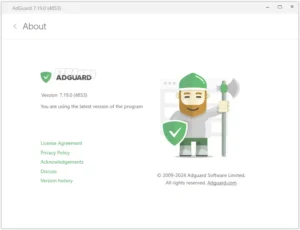Understanding Types of Car Insurance 2024
There’s a lot to consider when choosing car insurance in the UK, especially when deciding between comprehensive and third-party cover. Understanding the key differences can help you make an informed choice that suits your needs and budget. In this guide, we’ll explore both options, comparing their features and costs, so you can decide which type of insurance best supports your driving lifestyle and your financial situation.
Understanding Types of Car Insurance
Knowing the types of car insurance you have can greatly influence your decision making. Here is a breakdown of the main types of car insurance options in the UK:
| Type of insurance | Coverage |
|---|---|
| Fully inclusive | Comprehensive coverage, including third-party claims and damage to your vehicle |
| Third party insurance | Minimal coverage, only covers damage to others and their property |
| Legal responsibility | Covers damage or injury caused by you to another party. |
| Clash | Covers damage to your vehicle in the event of an accident, regardless of fault. |
| Personal Injury Protection | Covers medical expenses for you and your passengers. |
Understanding the differences and strengths of each type is important to making an informed choice.
Insurance included
Scroll down to get your Canva Pro account.
Not many people know that comprehensive insurance offers the broadest level of coverage for your vehicle. This not only includes protection against third-party claims, but also covers any damage to your vehicle, theft, and even fire. Such a policy typically covers a range of scenarios – from accidents to vandalism – ensuring peace of mind wherever the road takes you.
Third party insurance
Understanding third-party insurance fully means understanding its limitations. This basic form of coverage protects you against claims made by others for injury or damage but does not cover any damage to your vehicle.
Insurance under this policy is generally more expensive, but it increases your risk in the event of an accident involving your vehicle. In the event of a collision or damage, you will be responsible for any expenses incurred for repairs. While it may be suitable for older cars or drivers on a limited budget, it is important to evaluate your unique circumstances and the potential financial consequences before deciding on this option.
Key factors to consider
When choosing the right car insurance for your needs, consider the following factors:
- The level of coverage you need
- Your driving history and experience
- Your car’s age and value
- Potential premium costs
- Any additional benefits or features
You should evaluate each factor to find the best option for your circumstances.
Coverage levels
Any insurance policy offers different levels of coverage. Comprehensive insurance provides broad protection against accidents, theft and damage. In contrast, third party insurance covers only damage to others in an accident for which you are responsible. Assessing your personal needs and the risks you are willing to take will guide you in choosing the best option.
cost vs value
Scroll down to get your free Canva Pro account.
There is often a delicate balance between the cost of the premium and the value of the coverage provided. Cheap policies may seem attractive but can leave you with significant expenses in the event of an accident. Always weigh the potential risks against the cost of the premium to ensure you get the most value for your money.
The comparison reveals that while low-cost insurance may save you money today, it can lead to higher costs in the future if it doesn’t provide adequate protection. Assessing your personal circumstances, driving habits, and the type of vehicle you own can help you determine the right balance between cost and value, protecting your budget and your peace of mind.
How to Compare Insurance Options
Any effective comparison of auto insurance options involves evaluating multiple factors that affect coverage and cost. Focus on the type of coverage, the excess amounts, and any additional benefits the policy offers. Understanding these differences can help you decide which option best suits your needs.
| Factors to consider | a description |
| Coverage type | Evaluate whether the policy offers fully comprehensive, third-party, or other types of coverage. |
| Installment cost | Compare monthly or annual premium fees for different policies. |
| excess amount | Evaluate the excess amount you will have to pay when you file a claim. |
| Additional benefits | Look for features like breakdown cover or no-claims discounts. |
Collection of quotes
Gathering multiple quotes is important when comparing auto insurance options. Use online comparison sites to get quotes from different insurance companies, and be sure to provide the same information for each provider to get an accurate comparison. This will allow you to see how rates and coverage vary across the market.
Policy Terms Evaluation
Every time you consider purchasing an insurance policy, carefully evaluate the terms and conditions to discover any limitations or exclusions that may affect you. Look for items such as coverage limits, specific scenarios that may not be covered, and details surrounding the claims process.
It is essential to carefully review the wording of the policy to ensure you understand what is and is not covered. Checking the terms related to driving abroad, modifications to your vehicle, and how personal items are handled in the claim can make a big difference. This comprehensive assessment allows you to make an informed decision that best suits your driving habits and financial circumstances.
Tips for Making an Informed Choice
Despite the many options available, making an informed decision about car insurance is essential for your peace of mind and financial security. To help you make this decision, consider the following tips:
- Evaluate your driving habits and vehicle type.
- Compare quotes from multiple insurance companies.
- Understand coverage limits and exclusions.
- Look for discounts and loyalty rewards.
Knowing these factors will enable you to choose the right insurance policy for your needs.
Scroll down to get Canva Pro features for free.
Assess your needs
Choosing your car insurance should be based on your personal driving circumstances. Evaluating your mileage, the age of your car, and how often you drive can help you figure out whether comprehensive or third party insurance is right for you. In turn, this helps ensure that you don’t overpay for coverage you may not need.
Read customer reviews
Customer reviews are a valuable resource when choosing an auto insurance company. Reviews from current or former policyholders can shed light on the strengths and weaknesses of different insurance companies. This can give you a clearer picture of what to expect in terms of claims handling and customer service.
Reading customer reviews allows you to gather information based on real experiences. Pay attention to reviews related to responsiveness, customer satisfaction with claims, and overall quality of service. You may discover trends that can influence your decision, helping you avoid disappointing experiences and choose a service provider that meets your desired service standards.
Common Misconceptions
When considering your car insurance options, you may encounter several misconceptions about comprehensive and third-party insurance. These misconceptions can influence your decisions and leave you feeling uncertain about which policy is right for your needs. By addressing these misconceptions, you can make more informed choices about your car insurance and ensure adequate protection for you and your vehicle.
Myths about comprehensive insurance
It’s clear that many drivers find comprehensive insurance to be the most expensive option, leading them to avoid it in favor of cheaper alternatives. However, comprehensive coverage can save you money in the long run by providing broader protection, including coverage for theft and damage to your vehicle in an accident, whether you’re at fault or not.
Misunderstanding about third party coverage
Although third party insurance is often viewed as a minimum requirement, there is a great deal of misunderstanding about its limitations and benefits. Many people mistakenly believe that it provides broader coverage than it actually does, which can lead to under-insurance.
Third party liability insurance only covers liability for damage you cause to others, which means that if you are involved in an accident, you will not be protected for any damage to your own car. This could leave you financially vulnerable if someone else damages your car or if your car is stolen. Understanding these limitations is important to choosing the right policy and ensuring peace of mind on the road.
The role of surplus and claims
Many drivers often overlook the importance of understanding excess and claims when comparing auto insurance options. The amount of the excess directly impacts your out-of-pocket expenses when filing a claim, which can be a significant factor in your overall insurance costs. Understanding how these components work can lead to better financial decisions and help maximize your coverage benefits.
Understanding Overpayments
You should know that the excess is the amount you agree to pay for a claim before your insurance company covers the rest. This amount is determined by various factors, such as the type of coverage and the policy you choose. Higher excess amounts usually result in lower premiums, but they may increase your financial responsibility if you need to make a claim.
Claims process explained
Many policyholders don’t realize that the claims process can vary greatly depending on your insurance company. It typically involves notifying your insurance company immediately after an accident, providing necessary documentation, and possibly dealing with claims investigators or third parties. Having a clear understanding of this process can make claims management go much smoother.
Additionally, insurance companies often have specific timelines and requirements, which means that not following the correct procedure could delay or even result in your claim being denied. Familiarizing yourself with your provider’s claims process, such as providing photos or police reports when required, increases your chances of a successful resolution. Always keep detailed records of your policy and the accident to ensure you have all the necessary information ready for a smooth claims experience.
You have successfully arrived. You can now get a free Canva Pro account.
Congratulations!
















